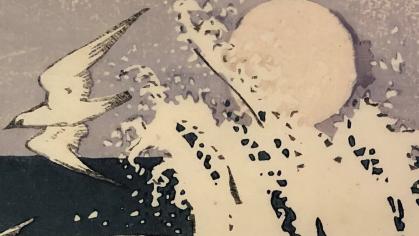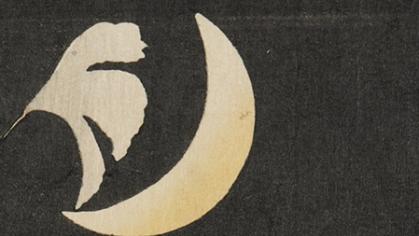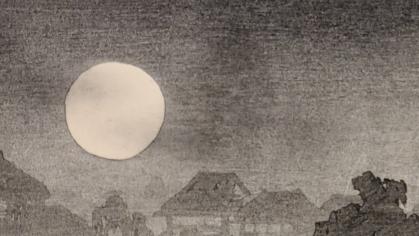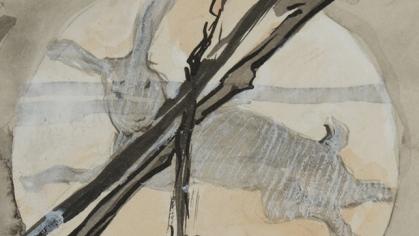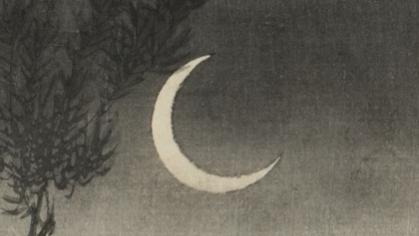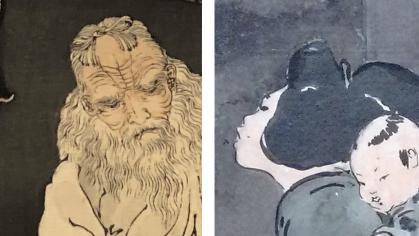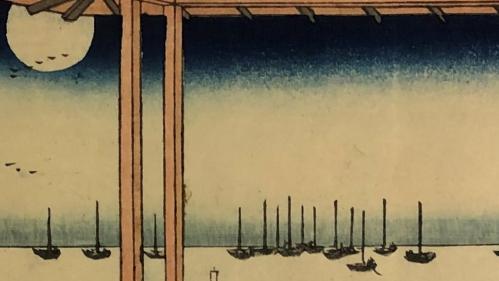
Musings by Moonlight: The Moon from Japanese Art to Japonism
The moon, with its many shades and phases, has inspired artists, writers, and poets throughout Japanese history. Since ancient times, people associated the setting moon, the hazy spring moon, or the moon hidden behind clouds and trees with emotions of love and longing. The changing phases of the moon were sources of revelation, as people were reminded of the transience and ephemerality in nature and life. Meanwhile, the autumn full moon, celebrated through the folk tradition of tsukimi 月見 (moon-viewing), festivals, and songs, was appreciated as a symbol of harvest and prosperity. This exhibition brings together Japanese prints (known as ukiyo-e 浮世絵, or “pictures of the floating world”) and the Western works of Japonism in the Zimmerli Art Museum collection to explore the diverse expressions of “moon” in Japanese and Western art of the late-nineteenth to early-twentieth century.
This virtual exhibition was organized by Professor Haruko Wakabayashi, Department of Asian Languages and Cultures, and students in her Fall 2020 course, From Text to Image in Japanese Art, with Nicole Simpson, Assistant Curator of Prints & Drawings.
Explore the Zimmerli’s online exhibition Musings by Moonlight: The Moon from Japanese Art to Japonism, with the team who created it: Rutgers students from Professor Haruko Wakabayashi's course “From Text to Image in Japanese Art” and Nicole Simpson, the museum’s assistant curator of prints & drawings. You will also hear about the moon in contemporary Japanese manga from Dr. Kay Clopton from Ohio State's Billy Ireland Cartoon Library and Museum, upcoming opportunities at the Asian American Cultural Center, and how to make a rabbit and moon in origami!
Presented with the support of Rutgers Global, Rutgers Department of Asian Languages and Cultures, and Rutgers Asian American Cultural Center. Event recorded April 6, 2021.
